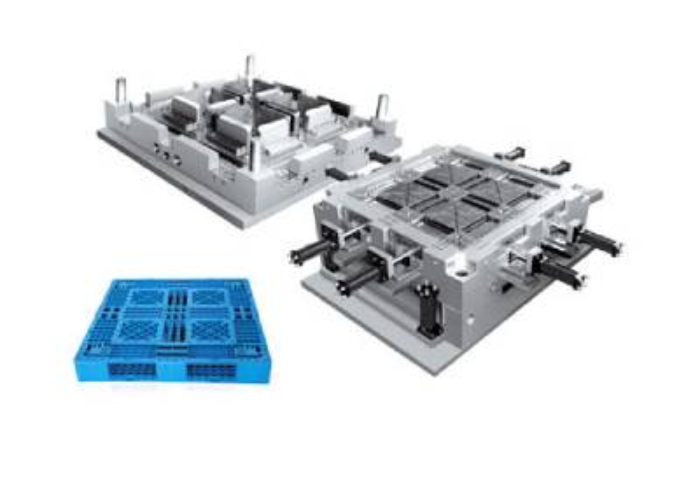Revolutionizing Aerospace Engineering: The Impact of Plastic Injection Molding on Innovation and Efficiency
Aerospace plastic injection molding stands as a critical process in the aerospace industry, revolutionizing the manufacturing of components used in aircraft and spacecraft. This method involves injecting molten plastic into a mold to produce intricate and precise parts. The application of plastic injection molding in aerospace brings forth a range of benefits and innovations, while not without its challenges.
Benefits:
Weight Reduction: One of the primary advantages of aerospace plastic injection molding is the ability to create lightweight yet structurally robust components. This weight reduction is crucial in aerospace applications, contributing to fuel efficiency and overall performance.
Complex Geometries: Plastic injection molding allows for the production of highly complex and intricate shapes that may be challenging or impossible to achieve through traditional manufacturing methods. This capability is essential in crafting aerodynamic and space-efficient components.
Material Variety: The process accommodates a broad range of plastic materials, each with its unique properties. This versatility enables engineers to select materials based on the specific requirements of the aerospace component, whether it be for insulation, structural support, or thermal resistance.
Cost-Effective Mass Production: Once the molds are created, the mass production of identical components becomes cost-effective. This scalability is advantageous in the aerospace industry, where large quantities of standardized parts are often needed.
Challenges:
Material Selection: While the variety of materials is a benefit, selecting the right material for aerospace applications can be challenging. Factors such as temperature resistance, durability, and weight must be carefully considered.
Tolerances and Precision: Aerospace components demand high precision and tight tolerances. Achieving this level of accuracy consistently in plastic injection molding requires advanced tooling and meticulous quality control processes.
Regulatory Compliance: The aerospace industry is heavily regulated, and components must meet stringent safety and quality standards. Ensuring compliance with these regulations adds complexity to the aerospace plastic injection molding process.
Case Studies:
Airfoil Components: Plastic injection molding has been employed to manufacture airfoil components, such as winglets, with intricate shapes and optimal aerodynamic profiles. The lightweight nature of plastic contributes to fuel efficiency.
Cabin Interior Components: From overhead bins to seat components, aerospace manufacturers utilize plastic injection molding for various cabin interior parts. This allows for customization, weight reduction, and cost-effective production.
Structural Brackets: Critical structural components, like brackets, are produced using plastic injection molding. The method ensures the required strength while offering the design flexibility needed for integration into complex structures.
Conclusion:
Aerospace plastic injection molding continues to play a pivotal role in advancing the aerospace industry. The benefits of weight reduction, complex geometries, material variety, and cost-effective mass production make it a go-to method for manufacturing components crucial to the performance and safety of aircraft and spacecraft. Despite the challenges posed by material selection, tolerances, and regulatory compliance, ongoing innovations and advancements in technology are steadily overcoming these hurdles. As the aerospace industry evolves, so too will the role and impact of plastic injection molding in shaping its future.
Vorig:Achieving Precision and Durability with Aerospace Molding Parts
Volgende: Creating the Perfect Plastic Garbage Bin Mold: A Guide to Efficient and Sustainable Waste Management
-
How can plastic injection molds efficiently produce plastic products?
2024-10-23
Plastic injection molds are specialized tools used in plastic injection molding processes. Through special design and ma...
Bekijk details -
Precision Molds: Crafting Perfection in Manufacturing
2023-6-15
Precision molds are a crucial component of modern manufacturing, enabling the mass production of high-quality products w...
Bekijk details -
Designing an Efficient Plastic Pallet Mould for Optimum Performance
2023-6-27
Plastic pallets have become increasingly popular in recent years due to their numerous advantages over traditional woode...
Bekijk details -
China Industrial Molding Parts manufacture
2023-5-16
Industrial molding parts are components that are used in the manufacturing process of different products. These parts ar...
Bekijk details -
Creating a Plastic Garbage Bin Mold: An Innovative Solution for Waste Management
2023-8-30
Introduction: Waste management is a growing concern worldwide, as the amount of plastic waste continues to rise exponent...
Bekijk details -
Create your own wine set, customized plastic beer crate mold
2024-4-25
Creating exclusive wine sets is not only the pursuit of quality life, but also a unique way to show personality and tast...
Bekijk details








